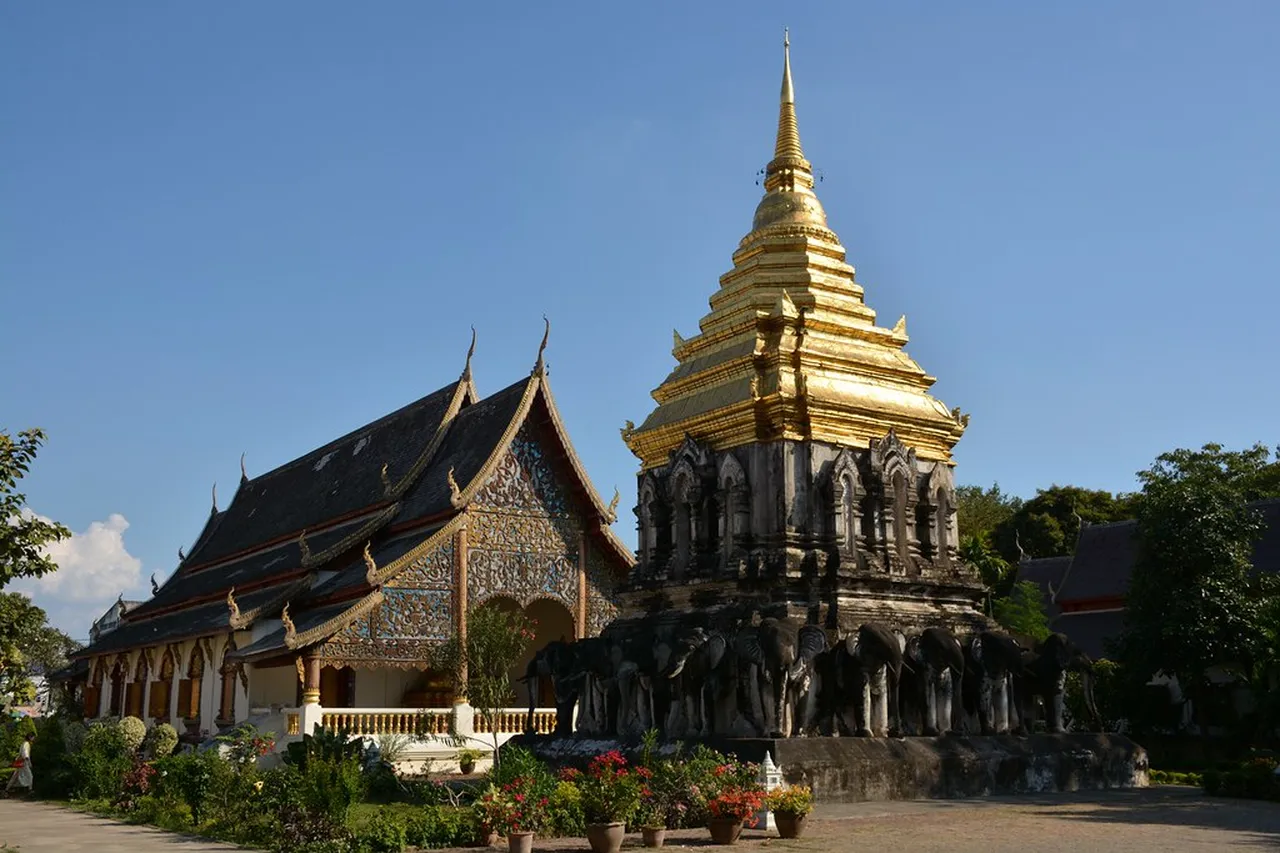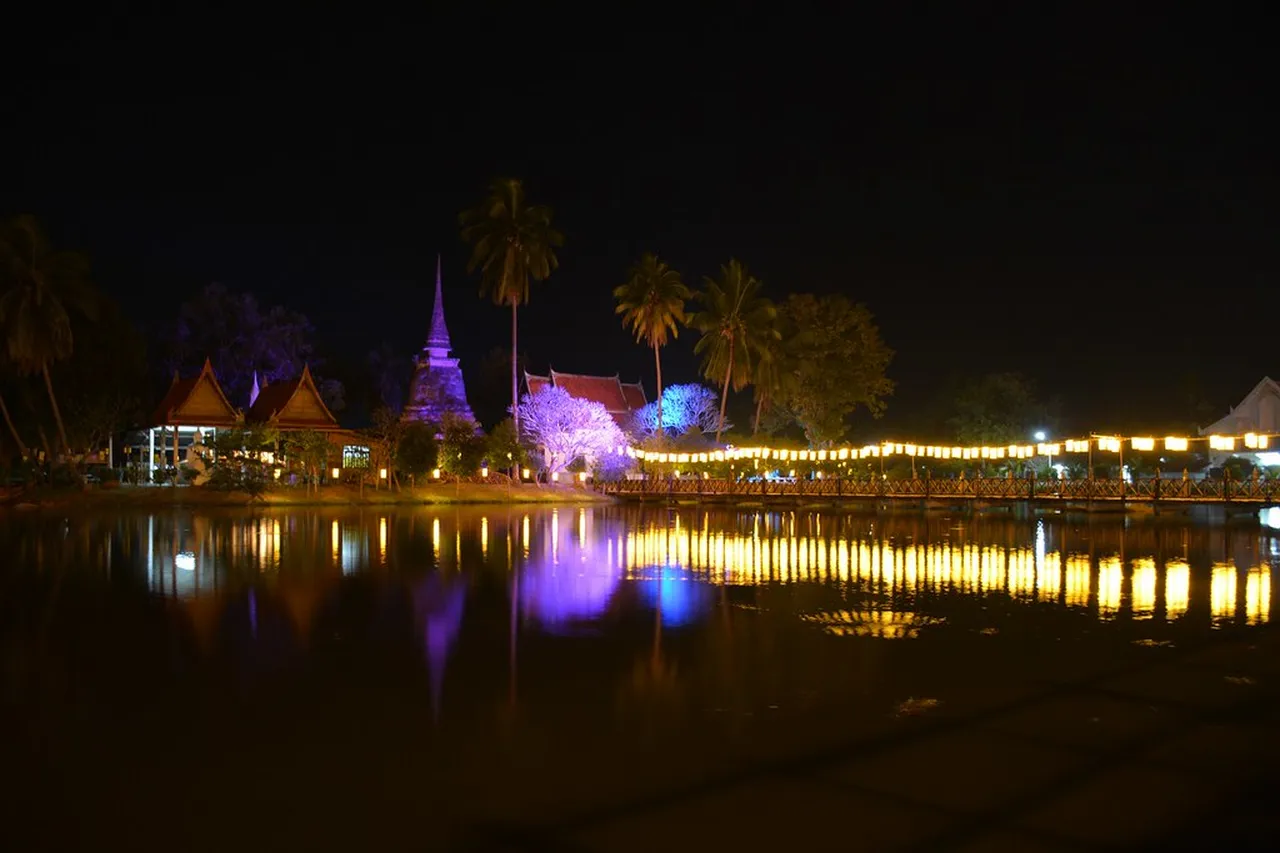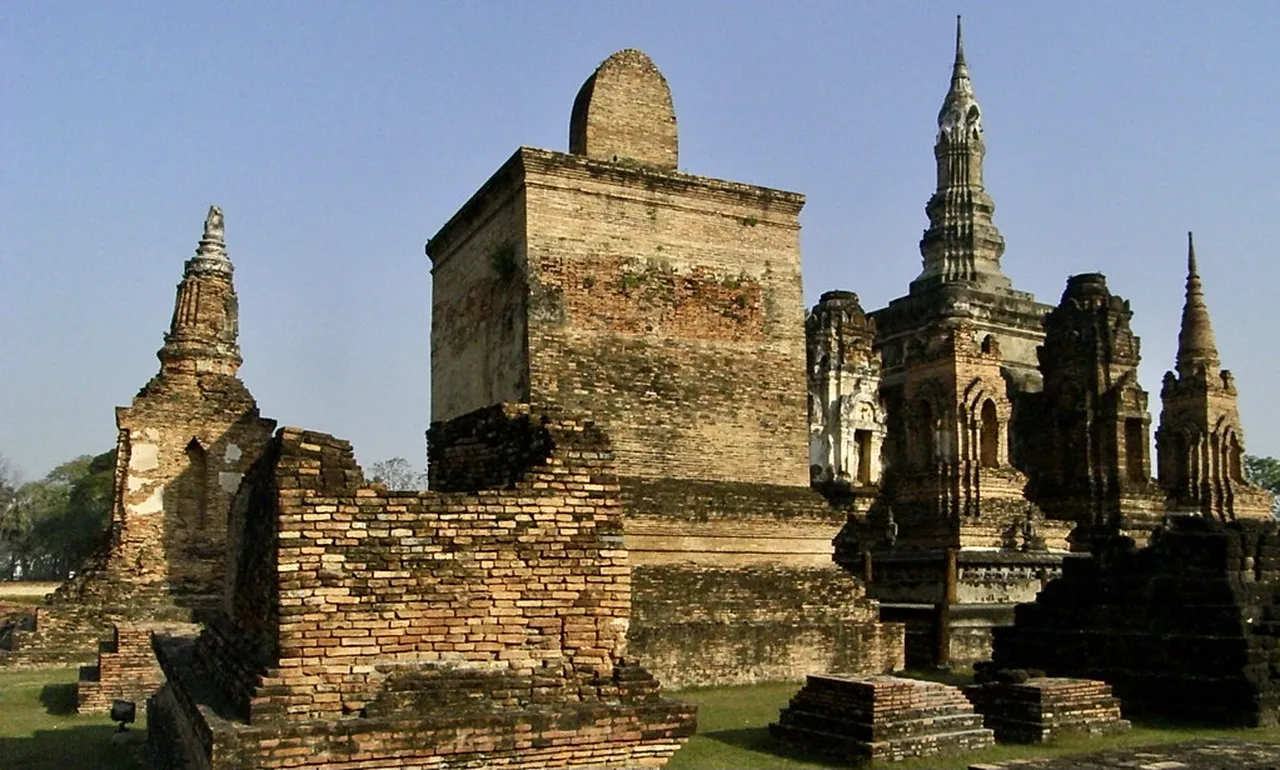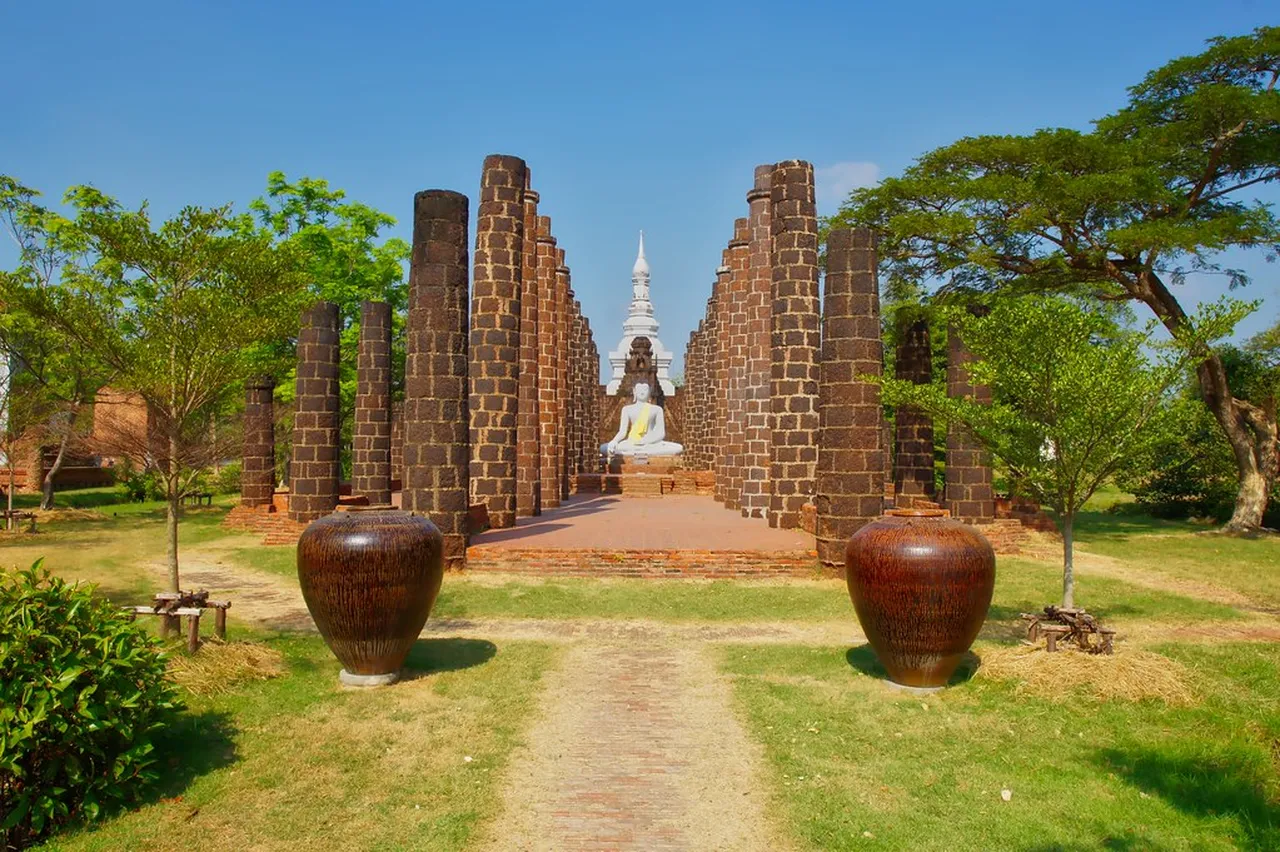
Sukhothai Culture: Discover Thailand’s Historical Gems
Table of Contents
Sukhothai Culture
Sukhothai, known as the cradle of Thai civilization, offers a rich tapestry of culture that is steeped in history and tradition. As the ancient capital of the Sukhothai Kingdom, this enchanting city boasts magnificent temples, historical parks, and a vibrant heritage that attracts culture enthusiasts from all over the world. In this article, we will delve into the fascinating aspects of Sukhothai culture, showcasing its unique legacy, religious practices, and the festive spirit that continues to thrive today. Whether you’re an art lover, a history buff, or simply seeking an enriching travel experience, Sukhothai’s treasures are waiting to be uncovered.
Want to find the best travel deals for this destination? personalized adventure planner with our adventure planning specialist!
1. The Historical Significance of Sukhothai Culture

Sukhothai, often regarded as the cradle of Thai civilization, holds immense historical significance. This ancient kingdom flourished during the 13th to 15th centuries and was the first capital of Thailand. During this era, the foundations of Sukhothai culture were laid, shaping the nation’s identity.
Moreover, the innovations in governance and trade established here profoundly influenced future Thai kingdoms. For instance, the Sukhothai model of administration promoted the welfare of its people, which is still echoed in modern Thai governance. Additionally, the advent of the Thai script, created by King Ramkhamhaeng, transformed communication and education.
Exploring Sukhothai offers a unique glimpse into the origins of Thai culture, making it a significant destination for history enthusiasts.
2. Discovering Sukhothai’s Ancient Temples: Wat Mahathat

Among the plethora of ancient structures in Sukhothai, Wat Mahathat stands out as a prime example of Sukhothai architecture. Built in the 13th century, this temple is renowned for its impressive stupa and serene Buddha statues. Visitors are often captivated by its beauty and intricate designs.
In addition to the temple itself, the surrounding ruins provide a glimpse into the religious practices of the time. As a centerpiece of Sukhothai culture, Wat Mahathat not only served as a place of worship but also as a hub for educating monks in Buddhist teachings.
Moreover, the tranquil atmosphere around the temple allows for reflection and inspires awe among visitors. Thus, Wat Mahathat remains a must-visit destination for those exploring the rich tapestry of Sukhothai culture.
3. The Influence of Sukhothai Art on Thai Culture

The art developed during the Sukhothai period has had a lasting impact on Thai culture. Characterized by beautiful bronze statues and intricate carvings, Sukhothai art reflects the essence of spirituality and devotion. This era introduced the renowned Sukhothai Buddha style, which influenced religious art across the country.
Furthermore, the artistic techniques perfected in Sukhothai can still be seen in contemporary Thai art forms, both in painting and sculpture. As artists continue to draw inspiration from this rich cultural heritage, visitors can observe the evolution of Thai art firsthand.
Therefore, comprehending the influence of Sukhothai art is essential for anyone seeking to appreciate modern Thai cultural identity.
4. Traditional Festivals in Sukhothai: Loy Krathong Celebration

The Loy Krathong festival is one of the most enchanting and important celebrations in Sukhothai culture. Held on the full moon of the 12th lunar month, the festival symbolizes the appreciation of water and the hope for prosperity. During this time, locals and tourists alike release beautiful krathongs, or floating baskets, made of banana leaves adorned with flowers and candles into the river. This acts as a tribute to the water goddess and is believed to bring good luck.
Moreover, the Loy Krathong celebration features vibrant parades, traditional Thai dancing, and various cultural displays. Visitors can enjoy the lively atmosphere while tasting local delights that enhance the experience. Thus, attending this festival provides a unique insight into Sukhothai’s rich traditions and is not to be missed.
5. Exploring Local Cuisine: Sukhothai’s Unique Dishes

When it comes to experiencing Sukhothai culture, the local cuisine plays a vital role. Sukhothai is known for its distinctive dishes, especially Sukhothai noodles, which are a must-try for every visitor. This delectable dish features thin rice noodles served in a flavorful broth topped with herbs, vegetables, and meats or tofu, representing a perfect balance of taste.
Furthermore, Sukhothai has a variety of street food vendors offering delicious snacks like fried banana and crispy spring rolls that truly capture the essence of Thai flavors. Don’t forget to sample the local sweets, which are often made from coconut and rice flour, adding to your culinary journey. Ultimately, Sukhothai’s unique dishes reflect the rich cultural tapestry found in this historical region.
6. The Impact of Buddhism on Sukhothai Culture
Buddhism plays an integral role in shaping Sukhothai culture, influencing various aspects of daily life, art, and architecture. The arrival of Theravada Buddhism in the 13th century brought profound changes, leading to the construction of magnificent temples, such as Wat Mahathat. Here, the serene Buddha images symbolize peace and wisdom, demonstrating the importance of spirituality in the region.
Moreover, Buddhism is reflected in the local customs and festivals, where religious practices are interwoven with daily Activities. For example, it is common to observe locals making merit at temples, offering food to monks, and participating in meditation retreats. Hence, the impact of Buddhism not only enriches Sukhothai’s cultural identity but also offers visitors a deeper understanding of the region’s historical legacy.
7. A Journey Through Sukhothai Historical Park
Recommendation: Don't miss out on amazing Sukhothai tours - book now!
The Sukhothai Historical Park is a UNESCO World Heritage Site that offers a remarkable glimpse into Thailand’s past, particularly showcasing Sukhothai Culture. This expansive park features well-preserved ruins of temples and palaces that date back to the 13th century. As I strolled through the park, I was captivated by the ancient architecture and serene landscapes.
One of the park’s Highlights is the iconic Wat Mahathat, which signifies the spiritual heart of Sukhothai. Its impressive chedis and peaceful Buddha statues invite visitors to reflect on the city’s glorious history. Moreover, walking or cycling through the tranquil pathways, surrounded by lotus ponds and lush greenery, provides a perfect way to immerse yourself in the area’s cultural richness.
“A visit to Sukhothai Historical Park is not just a journey through history; it’s a chance to connect with Thailand’s heritage.”
8. Craftsmanship in Sukhothai: Pottery and Silk Weaving
Sukhothai’s Craftsmanship is an integral part of its cultural identity. Renowned for its exquisite pottery, the city’s artisans continue to uphold traditional techniques that have been passed down through generations. The ceramic work here often features intricate designs and vibrant glazes, making it highly sought after by collectors.
Additionally, the silk weaving industry thrives in Sukhothai, showcasing the skill of local artisans. This local craftsmanship is notable for its rich colors and unique patterns that reflect the region’s identity. Visitors can explore workshops and even try their hand at pottery-making or weaving, creating lasting memories as they engage with the community.
9. Sukhothai’s Role in Thai Literature and Language
Tip: Discover the best Sukhothai experiences with Viator Tours!
Sukhothai is considered the birthplace of the Thai language and literature, making it a critically significant part of Sukhothai Culture. The city was home to King Ramkhamhaeng, who is credited with creating the Thai alphabet. This paved the way for the expressive literary tradition in Thailand.
Furthermore, visitors can explore historical texts and inscriptions that reveal the philosophical and cultural values of the time. This literary heritage continues to influence modern Thai literature, illustrating how Sukhothai’s contributions have transcended generations. By understanding this rich background, you can appreciate the depth of Thai culture as a whole.
10. The Vibrant Local Markets of Sukhothai
Exploring the vibrant local markets of Sukhothai is a must for any traveler. These markets are not just places to shop; they are living museums of Sukhothai culture. Here, you can immerse yourself in the local way of life, enjoying the sights and sounds of vendors calling out, enticing you to try their wares. Moreover, you will find a variety of goods, from fresh produce to handmade crafts.
For instance, the Night Market in Sukhothai is particularly popular. It offers a fantastic selection of street food, showcasing the unique flavors of the region. Hence, tasting local delicacies is a great way to appreciate the Sukhothai culture firsthand! Additionally, many vendors are eager to share the stories behind their products, enriching your understanding of the area.
11. Engaging with the Community: Cultural Performances and Arts
Engaging with the local community provides an authentic glimpse into Sukhothai culture. Throughout the year, various cultural performances offer insight into the traditions and artistic expressions of Sukhothai. In particular, the traditional dance performances showcase stories from Buddhist mythology and daily life.
Moreover, many local artists and artisans actively participate in these Events, allowing visitors to appreciate their crafts up close. As a result, you not only witness the beauty of their art but can often buy unique pieces to take home as souvenirs. Thus, attending these performances can be both enjoyable and educational!
12. Nature and Culture: Exploring Sukhothai’s Natural Wonders
Sukhothai is blessed with stunning natural landscapes that enhance its rich cultural heritage. Exploring areas like the Ramkhamhaeng National Park provides a perfect blend of breathtaking views and cultural insights. Here, lush forests and serenity invite you to connect with nature while contemplating the past.
Additionally, the connection between nature and Sukhothai culture is evident in many local traditions and practices. For instance, the region’s lush environment has influenced its art and festivals, demonstrating the harmony between the two. By taking time to explore these natural wonders, visitors can enrich their understanding of Sukhothai culture and its close ties with the landscape.
Sukhothai culture is a treasure trove of history, art, and tradition that paints a vivid picture of Thailand’s rich past. From the ancient temples that whisper tales of the Sukhothai Kingdom to the lively festivals that bring the community together, every aspect of Sukhothai invites exploration and appreciation. As you plan your visit to this historical gem, immerse yourself in its unique culture, savor the local flavors, and connect with the warm-hearted people of Sukhothai. Share your thoughts and experiences in the comments below—what aspect of Sukhothai culture excites you the most?